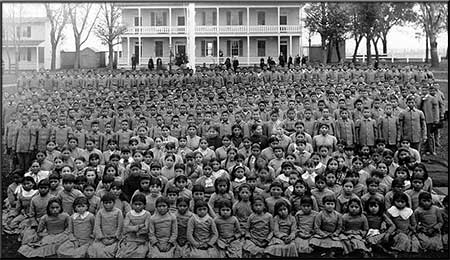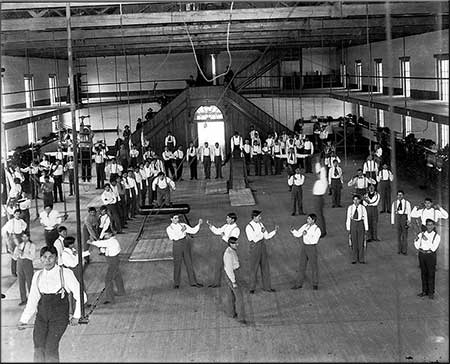On this Columbus Day, we look back at our history in order to see what can be done better for children today.
Christopher Columbus, you are the most successful real estate agent/ whoever lived, sold acres and acres of myth. Sherman Alexie, Vision (2)
While many celebrate Christopher Columbus landing in the “New” World, there are many especially Native American tribes who resent the myth that Christopher Columbus “discovered” America. After all, there were people here who had long before “discovered” it for themselves. While it’s easy to shrug off the controversy of when and for whom the discovery of America happened, it is important to note that the appropriation of land and culture began with explorers like Columbus and the ramifications continued on through the centuries. Policy after policy has been set in motion whereby Native American claims to land, civil rights and even the welfare of their children have been cast aside and ignored.
Even today.
NPR ran a continuing story about foster care abuse in South Dakota where many Native American children were removed from their homes and placed in nonnative homes. These actions are in violation of the Indian Child Welfare Act which was passed in 1978 to protect Native American children from being taken from their tribes.

The government taking Native American children from their homes has a long, storied and chilling past. Here is an abridged account of the forcible removal of children from their homes and into boarding schools.
PBS – Indian Country – History – Boarding Schools
“Native Americans were still called savages living in the midst of civilized farmers. By the 1870s, Indian reform groups were becoming more powerful. The Indian Rights Association conducted their own investigations of conditions on the reservations and was one of the first organizations to hire a full time lobbyist in Washington. Like the slavery abolitionists before them, the Indian reform movement pointed out the flawed morality of taking the land of indigenous people simply because the Europeans “discovered” the land and wanted it.
In 1879…Army Lt. Richard Henry Pratt… went to the Pine Ridge and Rosebud Sioux reservations in the Dakotas and convinced parents and tribal elders to allow him to take 60 young boys and 24 girls to a new boarding school. Where the previous boarding schools had been near the reservations, this one was in Carlisle, Pennsylvania, 1,500 miles away. He thought this long distance would surely break the hold that tribal life had on students closer to home.
When they got to Carlisle, the students were extremely homesick. Their long hair was cut. One boarding school student, Lone Wolf of the Blackfoot tribe, remembered:
[Long hair] was the pride of all Indians. The boys, one by one, would break down and cry when they saw their braids thrown on the floor. All of the buckskin clothes had to go and we had to put on the clothes of the White Man. If we thought the days were bad, the nights were much worse. This is when the loneliness set in, for it was when we knew that we were all alone. Many boys ran away from the school because the treatment was so bad, but most of them were caught and brought back by the police.
Students were prohibited from speaking their native languages. Instead, they were supposed to converse and even think in English. If they were caught “speaking Indian” they were severely beaten with a leather belt.
Students were taught to hate who they were born to be. Between 1880 and 1902, 25 off-reservation boarding schools were built and 20,000 to 30,000 Native American children went through the system. That was roughly 10 percent of the total Indian population in 1900.
By this time, 460 boarding and day schools had been built near the reservations, most run by religious organizations with government funds. All told, more than 100,000 Native Americans were forced by the U.S. government to attend Christian schools where tribal languages and cultures were replaced by English and Christianity.”
To read the complete entry, please visit http://www.pbs.org/indiancountry/history/boarding.html.
Those of us who have adopted internationally or who have domestically adopted children of a different culture than our own must learn how to celebrate and cherish the traditions, customs and culture of our children’s’ birth families. Our children need to feel their connection to their immediate family and the culture from whence they came.
On this Columbus Day, for the love of the adoptee in your life discover their culture, embrace it and learn how to connect it to yours.

Read More Holiday Posts:
- Labor Day and the Orphan Trains
- National Military Appreciation Month
- Black History Month
- Independence Day
- Down Syndrome Day
© Adoption STAR blog, 2013. Unauthorized use and/or duplication of this material without express and written permission from this blog’s author and/or owner is strictly prohibited. Excerpts and links may be used, provided that full and clear credit is given to the Adoption STAR Blog with appropriate and specific direction to the original content.

